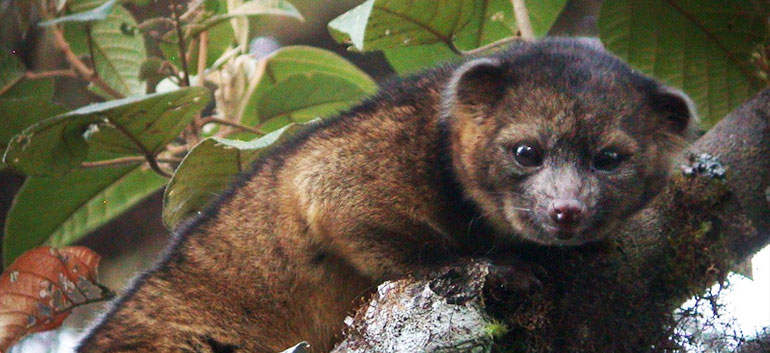Scientists have discovered a new species of carnivore living in the cloud forests of Colombia and Ecuador.
Although the animal had been seen and captured before, it was never properly described. The scientists, from the Smithsonian Institute, have called the animal “olinguito.”
It is the first new species of carnivore to be identified in the Americas for 35 years.
The animal is the smallest member of the animal family that includes racoons. It grows to 35cm in length and weighs up to 900g. Apart from fruit, the olinguito eats insects and nectar, using its enormous eyes to hunt during the night.
Zoologist Kristofer Helgen was the first to suspect that the animal was a new species. He described the moment that he saw its skin and bones while trawling through collections of mammals in a museum in Chicago.
“It stopped me in my tracks,” he told BBC News. “The skins were a rich red color and when I looked at the skulls I didn’t recognize the anatomy. It was different to any similar animal I’d seen, and right away I thought it could be a species new to science.”
It took another 10 years of research, using modern techniques like DNA analysis, to prove that it was in fact a new species.
The scientists then traveled to Ecuador to see if it still existed in the wild.
“We used clues from the specimens about where they might have come from and to predict what kind of forest we might find them in – and we found it!” Dr Helgen said.
The olinguito inhabits various protected areas stretching from western Ecuador to Central Colombia, at an altitude between 1500m and 2700m. Scientists estimate that 42% of its original habitat has been taken over by cities and agriculture.
It is thought that an olinguito was exhibited in zoos in the United States between 1967 and 1976, but that the zookeepers had mistaken it for an olinga, which explains why it refused to breed.
Most new discoveries of animals come from museum collections. Dr Helgen first described the world’s largest bat and the world’s smallest bandicoot in that way.
But the olinguito is his most significant discovery: “This reminds us that the world is not yet explored and the age of discovery is far from over,” he said. “The olinguito makes us think – what else is out there?”
While new insects and bacteria come along regularly, new mammals are rare.
The last carnivore to be identified in the Americas was the Colombian Weasel.


